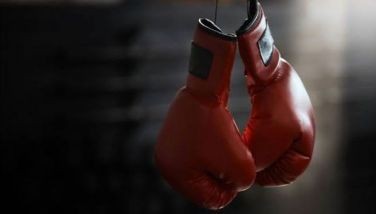Visayans in Aloha-land - Part 1
July 23, 2006 | 12:00am
Last July 13, 2006, we listened to a lecture at CNU by Dr. Belinda Aquino, director of the Center for Philippine Studies at the University of Hawaii at Manoa. The lecture was on the 100 Years of Filipino History in Hawaii as part of the Centennial celebration, and took more than an hour in power presentation format. What it lacked though, was the Visayan chapter.
I remember when I went to see the oldest surviving sakada couple on Kauai Island for an interview some 17 years ago, the wife wept remembering the ordeals they had to undergo. Finally, she said, she could tell a fellow Cebuano speaker. A number of students had gone to see them before, of course, but it was different because she couldn't express herself well in either Tagalog (the students' language) or English (after 60 years living there, still).
I went around the islands there in between class sessions in Philippine Literature at the University, looking for something worthwhile to do. Engrossed in folklore study, I hoped to gather legends and other narratives that survived in the plantations, perhaps comparing these with the ones still circulating here in Cebu. To my disappointment, the topography of the islands was not hospitable to Maria Cacao (focus of my collecting efforts) but only to mga agta ug dwende. I was surprised, however, to find folk songs that I hadn't heard before, apparently because Cebu took to modernization rapidly while the Cebuano minority in Hawaii still sang the songs to each other during their reunions. Once, I attended a Mass in classic Cebuano in a little church that was filled to capacity.
A visit to a few nursing homes was a sad experience, for the Visayans there couldn't talk anymore and dribbled all over the front of their shirts. One longhaired, long-nailed old man living with another old-timer in a plantation site couldn't even remember where he was from, and seemed to live only for his monthly pension. His companion told us they used to hold cockfight sessions, but that was before the game was banned. An old woman whose husband was among the plantation workers killed during the 1924 strike at Hanapepe, Kauai (and who had had three husbands after him) still felt bad about the bloody massacre that claimed 16 Visayans.
Dr. Aquino, who is an Ilocana (but who exposed a fellow Ilocano strongman, we don't have to name him, in her book Politics of Plunder) showed us slides of successful Filipinos in Hawaii, who were naturally Ilocanos. Understandable, my husband says, since there are twice (or thrice) as many Ilocanos in Hawaii now as there are Visayans. Proof is that the University of Hawaii is the only school in the world offering four levels of the Ilocano language!
True, recruitment of plantation workers shifted from Cebu (we were top exporter of cheap farm labor in 1916, 1917, 1919 and 1921) to Ilocos after the strikes of 1920 (where Visayans joined the Japanese) and 1924. In effect, the Hawaiian Sugar Planters Association (HSPA) was importing 500 scabs a day from the Ilocos. An aside here is that Castle and Cook of the HSPA invested some money in our sugar mills in Cebu; was that so the sugar plantation workers would remain here? The ethnic stereotyping was at work there, of course, with the Visayans seen as outspoken, adventurous and fun-loving and the Ilocanos as thrifty, industrious and docile. Ergo, which ones were considered better fitted for the rigorous plantation work?
Cebu was the recruitment site for prospective plantation workers also from the neighboring islands of Negros, Bohol, Leyte and Siquijor. Emilio Palao, the last Cebuano sakada to leave in 1946, said he had to go to Manila to join the Ilocanos, "just so", he said. Tony Ypil of Danao, Cebu, who had no farm work experience but was a writer of sorts, confessed he left in order to avoid a woman. One cannot generalize then why the Visayans continued to leave in spite of a vigorous propaganda in the newspapers of the time, especially Bag-ong Kusog. The nationalist writers campaigned against the "brawn drain" with arguments that our own sugar industry needed them here and that it was more patriotic to settle in Mindanao (but consider the hard work of clearing a field and building a house, compared with the ready fields and plantation rowhouses in Hawaii). There were the push factors, though, like the drought as well as an epidemic of cholera and leprosy.
Was it really poverty at home that pushed the Visayans to go abroad, or was it a native love for going somewhere else, wherever that is?
Anyway, we should pause and remember a few Visayans who made history in Hawaii. To mention a few: Ricardo Labez of Pardo, Cebu, the first Filipino war correspondent of Hawaii, later a bigwig in the local labor movement and a cabinet member under two governors; Tommy Tomimbang of Siquijor, the first Filipino radio broadcaster and his daughter Emme (who was here with the Hawaiian mission last January) who is herself a pioneer in mass media; and Modesto Salve (from Negros, I think) who was the first Filipino to graduate from a public high school in Honolulu and organizer upon retirement of the Hawaii State Senior Citizens String Hale O Laau.
Their grandchildren and great grandchildren have remained in Aloha-land, better educated, more assertive and conditioned in the American way of life.
I remember when I went to see the oldest surviving sakada couple on Kauai Island for an interview some 17 years ago, the wife wept remembering the ordeals they had to undergo. Finally, she said, she could tell a fellow Cebuano speaker. A number of students had gone to see them before, of course, but it was different because she couldn't express herself well in either Tagalog (the students' language) or English (after 60 years living there, still).
I went around the islands there in between class sessions in Philippine Literature at the University, looking for something worthwhile to do. Engrossed in folklore study, I hoped to gather legends and other narratives that survived in the plantations, perhaps comparing these with the ones still circulating here in Cebu. To my disappointment, the topography of the islands was not hospitable to Maria Cacao (focus of my collecting efforts) but only to mga agta ug dwende. I was surprised, however, to find folk songs that I hadn't heard before, apparently because Cebu took to modernization rapidly while the Cebuano minority in Hawaii still sang the songs to each other during their reunions. Once, I attended a Mass in classic Cebuano in a little church that was filled to capacity.
A visit to a few nursing homes was a sad experience, for the Visayans there couldn't talk anymore and dribbled all over the front of their shirts. One longhaired, long-nailed old man living with another old-timer in a plantation site couldn't even remember where he was from, and seemed to live only for his monthly pension. His companion told us they used to hold cockfight sessions, but that was before the game was banned. An old woman whose husband was among the plantation workers killed during the 1924 strike at Hanapepe, Kauai (and who had had three husbands after him) still felt bad about the bloody massacre that claimed 16 Visayans.
Dr. Aquino, who is an Ilocana (but who exposed a fellow Ilocano strongman, we don't have to name him, in her book Politics of Plunder) showed us slides of successful Filipinos in Hawaii, who were naturally Ilocanos. Understandable, my husband says, since there are twice (or thrice) as many Ilocanos in Hawaii now as there are Visayans. Proof is that the University of Hawaii is the only school in the world offering four levels of the Ilocano language!
True, recruitment of plantation workers shifted from Cebu (we were top exporter of cheap farm labor in 1916, 1917, 1919 and 1921) to Ilocos after the strikes of 1920 (where Visayans joined the Japanese) and 1924. In effect, the Hawaiian Sugar Planters Association (HSPA) was importing 500 scabs a day from the Ilocos. An aside here is that Castle and Cook of the HSPA invested some money in our sugar mills in Cebu; was that so the sugar plantation workers would remain here? The ethnic stereotyping was at work there, of course, with the Visayans seen as outspoken, adventurous and fun-loving and the Ilocanos as thrifty, industrious and docile. Ergo, which ones were considered better fitted for the rigorous plantation work?
Cebu was the recruitment site for prospective plantation workers also from the neighboring islands of Negros, Bohol, Leyte and Siquijor. Emilio Palao, the last Cebuano sakada to leave in 1946, said he had to go to Manila to join the Ilocanos, "just so", he said. Tony Ypil of Danao, Cebu, who had no farm work experience but was a writer of sorts, confessed he left in order to avoid a woman. One cannot generalize then why the Visayans continued to leave in spite of a vigorous propaganda in the newspapers of the time, especially Bag-ong Kusog. The nationalist writers campaigned against the "brawn drain" with arguments that our own sugar industry needed them here and that it was more patriotic to settle in Mindanao (but consider the hard work of clearing a field and building a house, compared with the ready fields and plantation rowhouses in Hawaii). There were the push factors, though, like the drought as well as an epidemic of cholera and leprosy.
Was it really poverty at home that pushed the Visayans to go abroad, or was it a native love for going somewhere else, wherever that is?
Anyway, we should pause and remember a few Visayans who made history in Hawaii. To mention a few: Ricardo Labez of Pardo, Cebu, the first Filipino war correspondent of Hawaii, later a bigwig in the local labor movement and a cabinet member under two governors; Tommy Tomimbang of Siquijor, the first Filipino radio broadcaster and his daughter Emme (who was here with the Hawaiian mission last January) who is herself a pioneer in mass media; and Modesto Salve (from Negros, I think) who was the first Filipino to graduate from a public high school in Honolulu and organizer upon retirement of the Hawaii State Senior Citizens String Hale O Laau.
Their grandchildren and great grandchildren have remained in Aloha-land, better educated, more assertive and conditioned in the American way of life.
BrandSpace Articles
<
>
- Latest
- Trending
Trending
Latest
Trending
Latest
Recommended



















